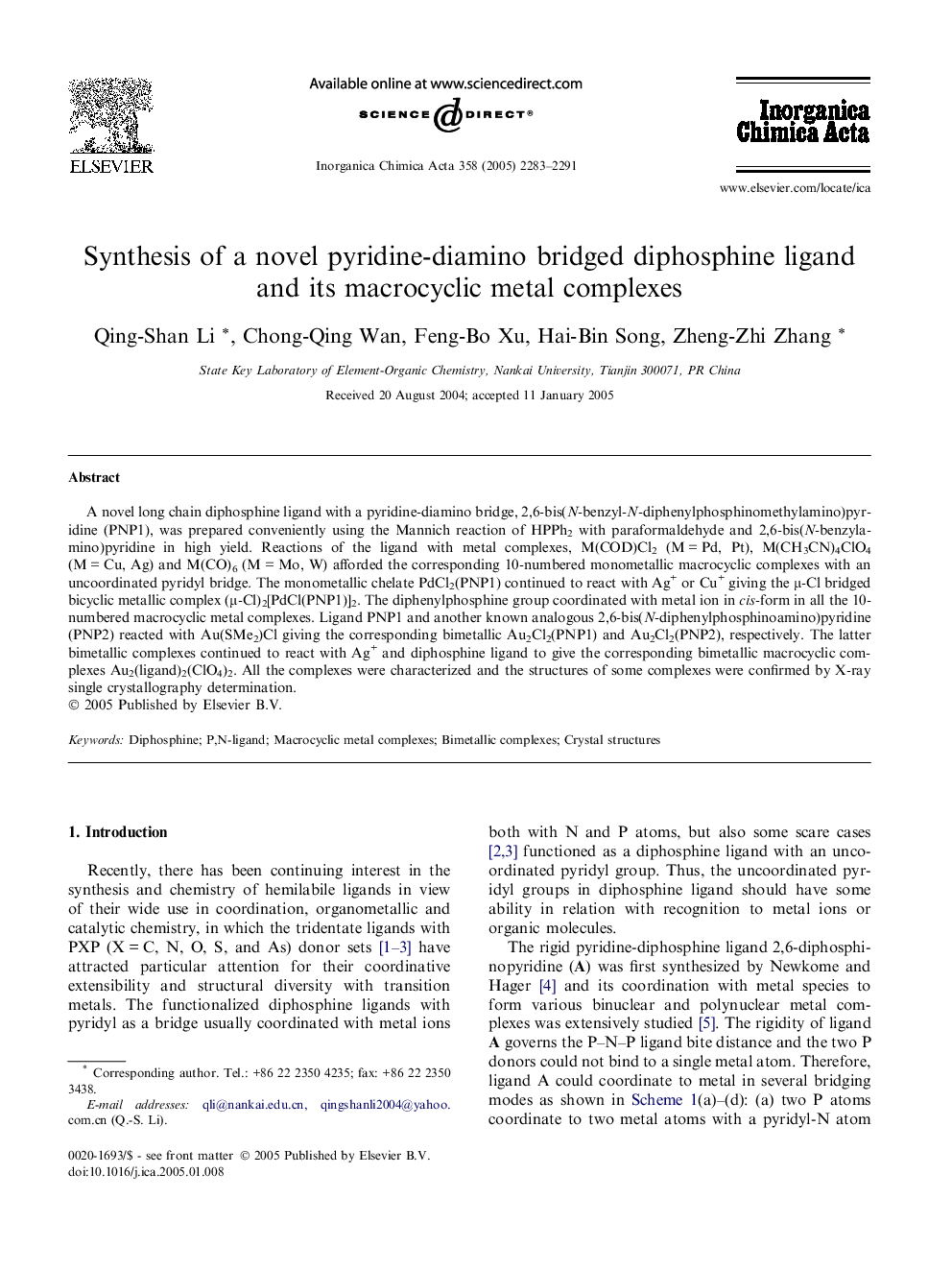| Article ID | Journal | Published Year | Pages | File Type |
|---|---|---|---|---|
| 1308578 | Inorganica Chimica Acta | 2005 | 9 Pages |
A novel long chain diphosphine ligand with a pyridine-diamino bridge, 2,6-bis(N-benzyl-N-diphenylphosphinomethylamino)pyridine (PNP1), was prepared conveniently using the Mannich reaction of HPPh2 with paraformaldehyde and 2,6-bis(N-benzylamino)pyridine in high yield. Reactions of the ligand with metal complexes, M(COD)Cl2 (M = Pd, Pt), M(CH3CN)4ClO4 (M = Cu, Ag) and M(CO)6 (M = Mo, W) afforded the corresponding 10-numbered monometallic macrocyclic complexes with an uncoordinated pyridyl bridge. The monometallic chelate PdCl2(PNP1) continued to react with Ag+ or Cu+ giving the μ-Cl bridged bicyclic metallic complex (μ-Cl)2[PdCl(PNP1)]2. The diphenylphosphine group coordinated with metal ion in cis-form in all the 10-numbered macrocyclic metal complexes. Ligand PNP1 and another known analogous 2,6-bis(N-diphenylphosphinoamino)pyridine (PNP2) reacted with Au(SMe2)Cl giving the corresponding bimetallic Au2Cl2(PNP1) and Au2Cl2(PNP2), respectively. The latter bimetallic complexes continued to react with Ag+ and diphosphine ligand to give the corresponding bimetallic macrocyclic complexes Au2(ligand)2(ClO4)2. All the complexes were characterized and the structures of some complexes were confirmed by X-ray single crystallography determination.
Graphical abstractA long chain diphosphine ligand with a pyridine-diamino bridge, 2,6-bis(N-benzyl-N-diphenylphosphinomethylamino)pyridine (PNP1), was prepared and was used to react with metal complexes, M(COD)Cl2 (M = Pd, Pt), M(CH3CN)4ClO4 (M = Cu, Ag) and M(CO)6 (M = Mo, W) to afford the corresponding 10-numbered monometallic macrocyclic complexes with an uncoordinated pyridyl bridge.Figure optionsDownload full-size imageDownload as PowerPoint slide
